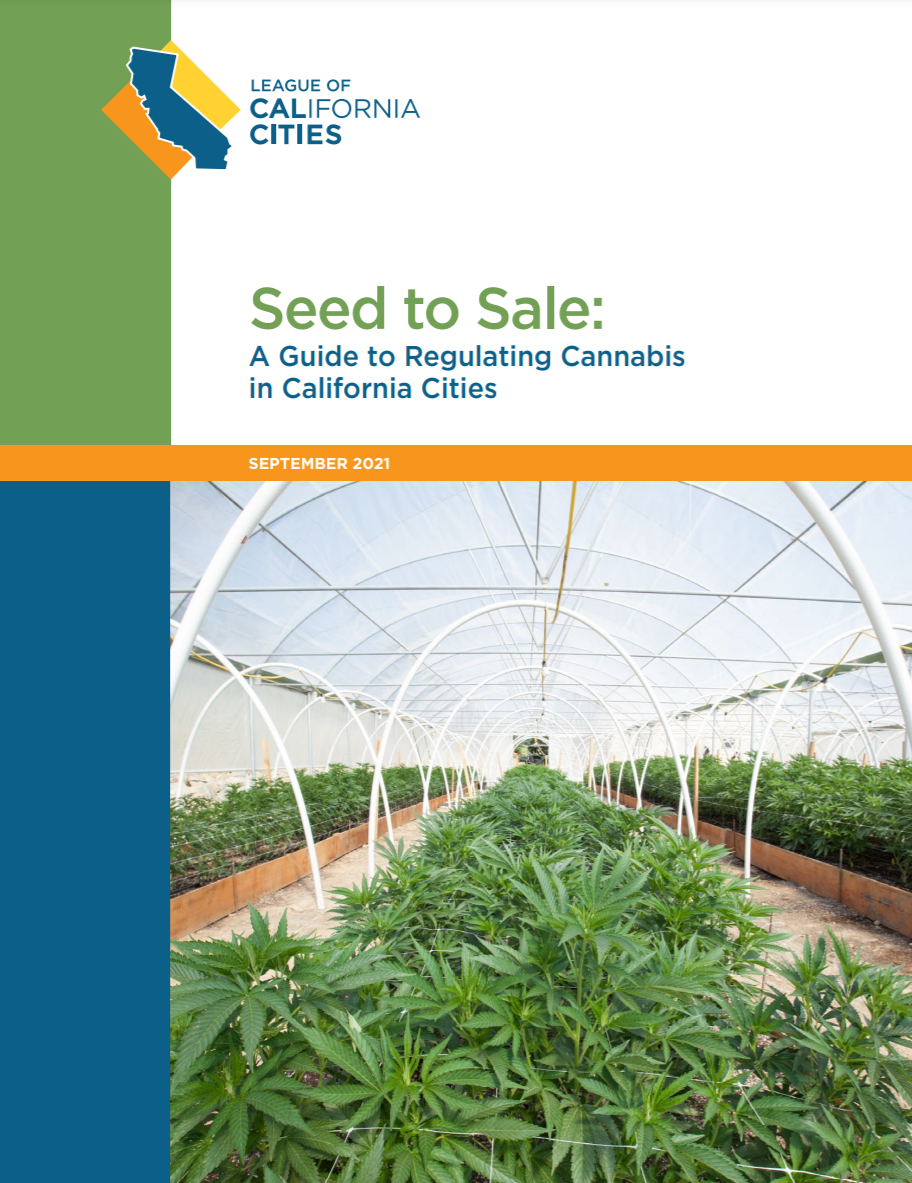Seed to Sale: A Guide to Regulating Cannabis in California Cities (September 2021)

California, as recognized by the United States Supreme Court, has been a pioneer in cannabis regulation.1 In 1913, California was one of the first states to prohibit the sale and possession of cannabis.2 At the time, the legislation referred to the drug as “loco-weed.”3 Eighty-three years later in 1996, California became the first state to authorize the use of “marijuana” for medicinal purposes.4 Today, the adult use of cannabis for non-medicinal purposes has been decriminalized in California. The State licenses the commercial cannabis businesses, and the industry is regulated from seed to sale. In 2020, it is estimated that cannabis sales in the State hit $4.4 billion.
In that same pioneering spirit, the Cannabis Regulation Committee (Committee) of the League of California Cities City Attorneys Department is pleased to present the first edition of Seed to Sale: A Guide to Regulating Cannabis in California Cities (Guide), which is intended to assist municipal attorneys in addressing legal issues related to cannabis regulation. Cannabis issues are particularly challenging for local government due to the lack of legal precedent and constantly evolving laws. For this reason, it is important that municipal attorneys stay abreast of current cases and precedent from other legal fields that can be applied to advise clients and offer solutions as cannabis issues arise. To that end, the Committee offers this Guide as a comprehensive and practical compilation of city attorney experience from throughout California.
The Guide is a starting point for approaching cannabis regulation questions. It is a useful tool to learn about the historical development of cannabis law, understand its current status, and consider practical approaches and tips to handle regulation issues. After this introduction, Part Two provides a historical overview of cannabis law and the regulatory framework at the federal and state level. Part Three presents the Committee’s perspective on regulating cannabis in cities. Part Four examines cannabis-related finance and taxation. Finally, Part Five outlines enforcement tools available for cities.
The Guide will help municipal attorneys better understand the intersectionality of cannabis issues with other relevant fields such as land use, environmental law, taxation, and public health and safety, among others. Equally important, the Guide can be used as a reference to analyze regulation options at the administrative, civil, and criminal levels, to achieve particular goals within a city.
